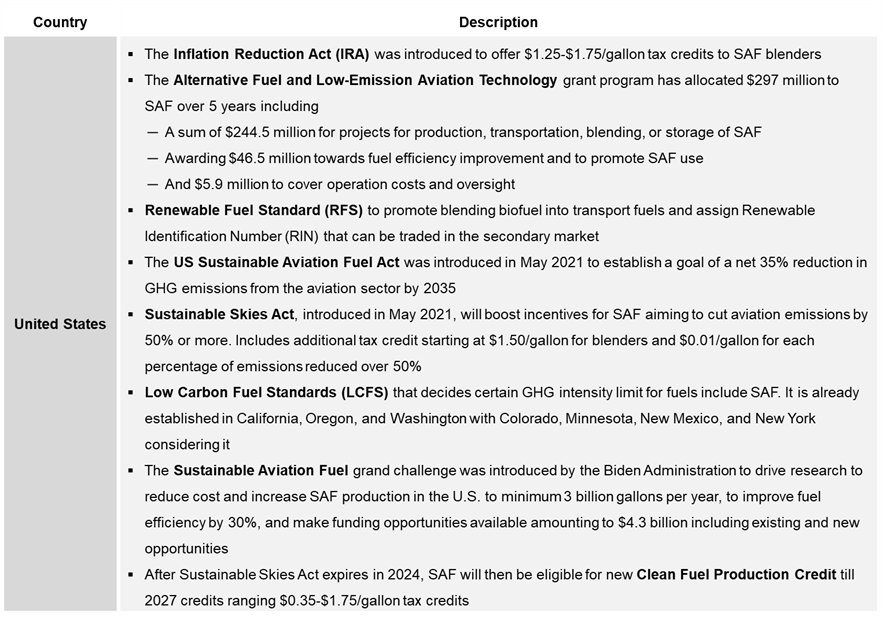
With the continuous expansion of the aviation industry, the issue of greenhouse gas (GHG) emissions has become prominent. As per the Department of Energy (DOE), U.S. commercial aviation currently consumes 10% of all transportation energy and contributes 2% of the nation’s CO2 emissions. In response to this concern, the Biden administration has taken steps to address the issue by directing the Energy Department to explore low-carbon alternatives to petroleum-based fuels and chemical feedstocks, with a particular focus on hard-to-abate sectors such as aviation.
The aviation industry itself has recognized the importance of transitioning to more sustainable practices. One significant development is the growing emphasis on sustainable aviation fuel (SAF), which has garnered support from regulatory bodies and voluntary programs. In the United States, efforts are underway to establish federal tax credits that incentivize investment in SAF, while state governments are introducing tax incentives to reduce uncertainties in both the demand and supply.

Among the states, California has witnessed remarkable growth in SAF production and usage, largely due to its Low Carbon Fuel Standard (LCFS) program. Furthermore, Illinois has approved a $1.50 per gallon tax credit for SAF sold or used by an Illinois air carrier. Similarly, Washington has recently granted a tax credit ranging from $1.00 to $2.00 per gallon based on greenhouse gas emissions reduction. These incentives undoubtedly make SAF production more appealing in the United States and align with the SAF Grand Challenge goal of producing 3 billion gallons of SAF by 2030.
The aviation industry’s increasing adoption of SAF highlights a significant transition towards sustainable fuel sources to mitigate the environmental impact of air travel. While this shift is promising, the potential challenges lie in the continuous growth of jet fuel demand, which could place pressure on feedstock availability and pose obstacles to achieving production targets. Critics argue that the current SAF-specific incentives predominantly favor existing or ongoing projects, underscoring the importance of establishing a stable and long-term policy framework. To secure a sustainable future for aviation, it is essential to address these concerns and foster an environment that facilitates long-term SAF production and utilization.
ADI has released a comprehensive study on the jet fuel and SAF markets. This study is readily accessible and provides ongoing insights into this rapidly changing industry. Stay up-to-date with ADI’s SAF Tracker to receive the latest information on airline commitments to SAF, off-take agreements, and partnerships aimed at commercialization.
– Maria Eduarda Lopes



















